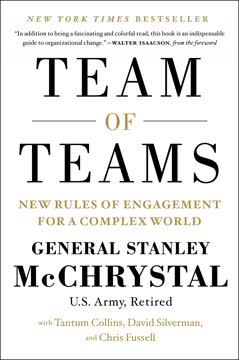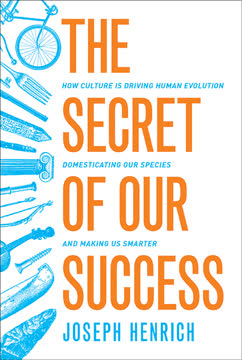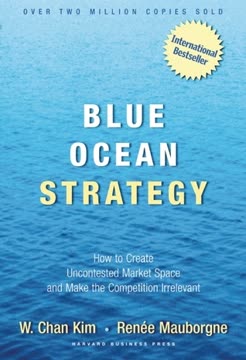Key Takeaways
1. Profound change requires understanding growth processes and limiting forces
"Every movement is being inhibited as it occurs."
Growth and limits interplay. Organizational change is like a living system, with reinforcing growth processes and limiting forces constantly interacting. Understanding this dynamic is crucial for sustaining profound change. Leaders must focus on nurturing growth processes while addressing the limits that inevitably arise.
Anticipate challenges. Effective change leaders proactively identify potential limiting forces before they become visible. This allows for better preparation and strategy development. Common challenges include:
- Lack of time
- Inadequate support and coaching
- Perceived irrelevance
- Inconsistency between words and actions
- Fear and anxiety
- Resistance from both believers and non-believers
- Governance issues
- Difficulty in knowledge diffusion
- Misalignment with organizational strategy and purpose
2. Three reinforcing processes drive sustained organizational change
"Because it matters," "Because my colleagues take it seriously," and "Because it works."
Personal results drive initial momentum. When individuals experience positive personal outcomes from change initiatives, such as increased job satisfaction or better work-life balance, they become more committed and enthusiastic. This creates a self-reinforcing cycle of investment and learning.
Networks of committed people expand influence. As more people become involved in change initiatives, informal networks develop. These networks share information, provide support, and spread innovative practices throughout the organization. This process is often more effective than formal hierarchical channels.
Business results provide credibility. Ultimately, change initiatives must demonstrate tangible business improvements to gain wider acceptance and support. As new practices lead to better outcomes, more people become willing to commit to the change process, creating another reinforcing cycle.
3. Time flexibility is crucial for initiating and sustaining change
"We don't have time for this stuff!"
Time scarcity limits progress. Many change initiatives fail because people feel they don't have enough time to invest in new practices alongside their regular work. This challenge often manifests early in the change process and can quickly derail efforts if not addressed.
Create time flexibility. Strategies to overcome time constraints include:
- Integrating initiatives to reduce redundancy
- Scheduling focused time for reflection and learning
- Trusting people to control their own time use
- Valuing unstructured time for creativity and problem-solving
- Building capabilities to eliminate busywork
- Saying "no" to non-essential demands and political games
- Experimenting with different time management approaches
4. Adequate coaching and support are essential for change initiatives
"We have no help!"
Build internal capacity. Organizations often rely too heavily on external consultants or pre-packaged training programs. Sustainable change requires developing internal coaching and support capabilities. This can be achieved by:
- Investing early in identifying and developing effective coaches
- Creating a "cadre of coaches" who support each other and continually develop their skills
- Integrating coaching into line management responsibilities
- Establishing learning centers or other infrastructure to support ongoing development
Provide diverse forms of help. Support can come from various sources:
- Internal or external consultants
- Experienced line managers
- Mentors (both within and outside the organization)
- Peer support networks
5. Establishing relevance is key to maintaining commitment to change
"This stuff isn't relevant!"
Connect to business priorities. Change initiatives must clearly demonstrate how they contribute to important business goals and outcomes. Leaders should:
- Articulate a compelling business case for change
- Link new practices to specific performance improvements
- Regularly revisit and reinforce the relevance of change efforts
Address individual concerns. People need to understand how change initiatives affect them personally. Strategies include:
- Holding open discussions about the purpose and impact of change
- Providing opportunities for individuals to shape the direction of change efforts
- Demonstrating how new practices can make work more meaningful and effective
6. Leaders must "walk the talk" to build trust and credibility
"They're not walking the talk!"
Consistency is crucial. When leaders' actions don't align with their stated values and goals for change, it undermines trust and motivation throughout the organization. This challenge often emerges as change initiatives gain momentum and face resistance.
Strategies for authentic leadership:
- Develop clear personal values and aims aligned with organizational goals
- Openly acknowledge gaps between ideals and current reality
- Model vulnerability and willingness to learn
- Create safe spaces for honest feedback and dialogue
- Work with partners who can provide perspective and support
- Cultivate patience and resilience in the face of setbacks
7. Fear and anxiety are natural responses to change that must be addressed
"This stuff is _____."
Recognize emotional responses. As change initiatives increase openness and challenge established norms, people naturally experience fear and anxiety. These emotions can manifest in various ways, from outright resistance to superficial support or silence.
Create psychological safety. Strategies to help people navigate fear and anxiety include:
- Starting small and building momentum before tackling difficult issues
- Avoiding frontal assaults on entrenched behaviors
- Setting an example of openness and vulnerability
- Valuing diversity of perspectives and learning styles
- Using breakdowns as opportunities for learning
- Ensuring participation is voluntary whenever possible
- Developing skills for productive conversation and conflict resolution
- Addressing underlying "family of origin" patterns that contribute to fear responses
8. Traditional metrics can hinder assessment of change initiatives
"This stuff isn't working!"
Recognize measurement limitations. Conventional performance metrics often fail to capture the full impact of change initiatives, especially in the short term. This can lead to premature negative assessments and loss of support.
Develop new assessment approaches:
- Appreciate the time delays involved in profound change
- Build partnerships with executive leaders to question traditional metrics
- Establish interim goals and milestones to gauge progress
- Look for unanticipated positive outcomes
- Track shifts in people's perspectives over time
- Make assessment a priority for change advocates
- Develop capabilities for "assessing to learn" rather than just evaluating
9. Diversity tension can be a catalyst for organizational learning and growth
"Being led means helping my boss to lead."
Reframe diversity challenges. Rather than viewing diversity solely through the lens of demographics or compliance, recognize it as a fundamental learning phenomenon. Diversity tension signals unmet needs and opportunities for systemic improvement.
Leverage diversity for innovation:
- Address questions of rank, power, privilege, and prejudice openly
- Challenge assumptions about "winners" and "losers" in the organization
- Develop skills for working across differences and managing tension productively
- Create opportunities for marginalized voices to contribute to organizational change
- Use diversity experiences to build empathy, creativity, and adaptability
Last updated:
FAQ
What is The Dance of Change by Peter M. Senge about?
- Sustaining organizational change: The book explores why sustaining momentum in organizational change is so difficult, focusing on the systemic and human challenges that cause most change efforts to stall or fail.
- Learning organizations: It builds on Senge’s earlier work on learning organizations, emphasizing the need for continuous learning, adaptation, and systems thinking.
- Ten interdependent challenges: The book identifies ten predictable, interrelated challenges that organizations face when trying to sustain profound change.
- Leadership at all levels: Senge redefines leadership as a distributed capacity throughout the organization, not just the domain of top executives.
Why should I read The Dance of Change by Peter M. Senge?
- Practical strategies for change: The book offers actionable frameworks and real-world examples from companies like Shell, Ford, and Intel, helping leaders avoid common pitfalls in change initiatives.
- Deep systemic insight: It goes beyond surface-level change management, addressing the emotional, cultural, and systemic barriers to lasting transformation.
- Leadership development: Readers learn how to foster leadership at all levels, build trust, and create environments that support ongoing learning and innovation.
- Tools for sustainability: The book provides tools, exercises, and stories to help organizations sustain momentum and adapt to complex challenges.
What are the key takeaways from The Dance of Change by Peter M. Senge?
- Change is a life cycle: Most change initiatives follow an S-shaped growth curve, with initial enthusiasm often stalling due to systemic limits.
- Leadership is ecological: Effective change requires a community of leaders—local line leaders, internal networkers, and executives—working together.
- Ten predictable challenges: Understanding and addressing the ten interdependent challenges is crucial for sustaining momentum.
- Systems thinking is essential: Seeing organizations as living systems with reinforcing and balancing processes helps leaders anticipate and overcome resistance.
What are the “Ten Challenges” to sustaining momentum in The Dance of Change by Peter M. Senge?
- Dynamic and interdependent: The ten challenges include “no time,” “no help,” “not relevant,” “walking the talk,” “fear and anxiety,” “measurement and assessment,” “believers and nonbelievers,” “governance,” “diffusion,” and “strategy and purpose.”
- Balancing processes: Each challenge represents a balancing force that conserves some aspect of the status quo, often pushing back against change efforts.
- Grouped by phase: Challenges are grouped into initiating change, sustaining momentum, and redesigning/rethinking, helping leaders anticipate resistance at each stage.
- Strategic focus: Addressing these challenges systemically, rather than with willpower or superficial fixes, is key to lasting change.
How does The Dance of Change by Peter M. Senge redefine leadership in organizational change?
- Myth of the hero-CEO: The book debunks the idea that a single charismatic leader can drive lasting change, emphasizing distributed leadership.
- Leadership as community capacity: Leadership is defined as the collective ability of a community to shape its future and sustain change.
- Three types of leaders: Senge highlights local line leaders (results-focused), internal networkers (community builders), and executive leaders (environment shapers), all of whom are interdependent.
- Vulnerability and openness: Effective leaders model vulnerability, authenticity, and a willingness to learn, fostering trust and psychological safety.
What are the three reinforcing growth processes that sustain profound change in The Dance of Change by Peter M. Senge?
- Enhancing personal results (R1): When individuals experience personal growth, trust, and meaningful work, their commitment to change deepens.
- Developing networks of committed people (R2): Informal internal networks spread new ideas and support, increasing participation beyond formal hierarchies.
- Improving business results (R3): As learning capabilities improve, so do business outcomes, which in turn reinforce enthusiasm and commitment to change.
How does The Dance of Change by Peter M. Senge use systems thinking to explain organizational change and resistance?
- Limits to growth archetype: The book uses system dynamics to show how reinforcing growth processes eventually encounter balancing forces that slow or stop change.
- Multiple systems perspectives: Senge introduces five kinds of systems thinking—system dynamics, open systems, social systems, process systems, and living systems—to provide a holistic view.
- Strategic use of diagrams: Leaders are encouraged to use systems diagrams to visualize interdependencies, feedback loops, and delays, enabling more effective interventions.
- Resistance as homeostasis: Resistance is reframed as the system’s way of maintaining internal balance, not just individual opposition.
What strategies does The Dance of Change by Peter M. Senge suggest for overcoming the “No Time” and “No Help” challenges?
- Time flexibility and integration: The real issue is not just lack of time, but lack of control over time; consolidating initiatives and scheduling focused time blocks is recommended.
- Value of slack time: Unstructured time for reflection, informal conversation, and creativity is essential for learning and innovation.
- Early investment in coaching: Finding and developing internal coaches early helps guide pilot groups and reduces reliance on external consultants.
- Culture of asking for help: Leaders must model vulnerability and encourage a culture where seeking help is seen as a strength, not a weakness.
What is the significance of pilot groups in The Dance of Change by Peter M. Senge?
- Incubators for change: Pilot groups allow organizations to test new ideas, develop learning capabilities, and achieve early results in a low-risk environment.
- Learning-driven vs. authority-driven: Groups driven by learning and participation create self-sustaining momentum, while those driven by authority often depend on single leaders and stall.
- Diverse forms: Pilot groups can be cross-functional teams, leadership teams, or informal networks, united by openness to experimentation and practical problem-solving.
- Foundation for diffusion: Successful pilot groups become models for wider organizational adoption and learning.
How does The Dance of Change by Peter M. Senge address the challenge of measurement and assessment in change efforts?
- Limitations of traditional metrics: Conventional measures often fail to capture the true progress of change, sometimes misrepresenting learning as negative results.
- Performance dashboards for learning: The book advocates for dashboards designed by employees to provide multi-dimensional feedback that supports learning, not just control.
- Phased assessment approach: Assessment should link learning interventions to skills, behaviors, organizational influence, and business results, requiring collective judgment and dialogue.
- Engagement with executives: Senior leaders must be involved in rethinking metrics and supporting more meaningful assessment approaches.
How does The Dance of Change by Peter M. Senge explain the diffusion of innovations and the role of organizational culture?
- Communities of practice: Informal networks and communities of practice are critical for spreading new knowledge and practices across the organization.
- Barriers to diffusion: Common obstacles include organizational silos, “Not Invented Here” syndrome, and lack of coaching or infrastructure to support learning.
- Cultural flexibility: Organizations must tolerate and support innovative subcultures, using mentoring and bicultural leaders to bridge gaps.
- Strategies for diffusion: Legitimizing network leaders, enhancing boundary permeability, and developing effective information infrastructures are key recommendations.
What is the organizational learning cycle and the concept of conscious oversight in The Dance of Change by Peter M. Senge?
- Four-stage learning cycle: The cycle includes generating information, integrating it into a big picture, collective sense-making, and deciding how to act—repeated continuously.
- Collective intelligence: Involving the whole organization in sense-making fosters ownership, alignment, and effective implementation of change.
- Conscious oversight defined: This is a discipline of stewardship, where leaders nurture people and systems with long-term responsibility, considering the organization as part of larger systems.
- Multiple intelligences: Leaders must develop fiscal, social, emotional, environmental, and spiritual intelligences to handle complexity and ambiguity, fostering trust and sustainable health.
Review Summary
The Dance of Change receives mostly positive reviews, with readers praising its comprehensive approach to managing organizational change. Many find it valuable for understanding challenges in implementing and sustaining change initiatives. Reviewers appreciate the book's focus on leadership, system thinking, and the human aspects of change. Some note its relevance for senior management and change leaders. While a few find it complex, most consider it a helpful resource for building learning organizations and fostering lasting transformation in corporate environments.
Similar Books










Download PDF
Download EPUB
.epub digital book format is ideal for reading ebooks on phones, tablets, and e-readers.








